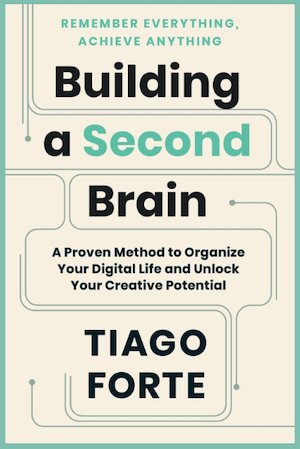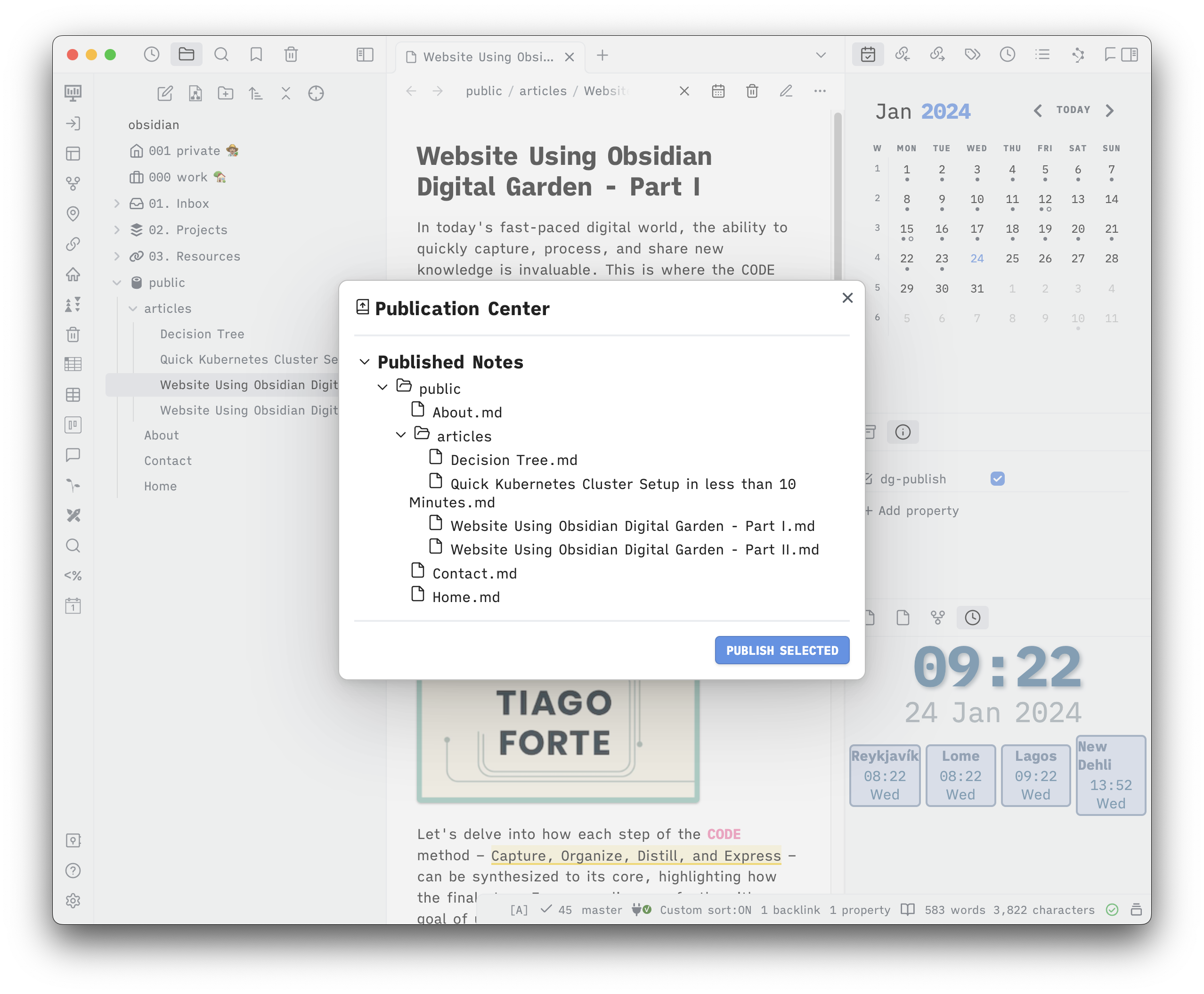Harnessing the CODE Method with Obsidian for Effective Knowledge Management! 🧠💡 - Part I
In today's fast-paced digital world, the ability to quickly capture, process, and share new knowledge is invaluable. This is where the CODE method, as outlined by Tiago Forte in "Building a Second Brain" becomes a game-changer, especially when combined with tools like Obsidian and its Digital Garden plugin.

Fig. 1: Tiago Forte's book "Building a Second Brain"
Let's delve into how each step of the CODE method – Capture, Organize, Distill, and Express – can be synthesized to its core, highlighting how the final step, Express, aligns perfectly with my goal of using Digital Garden for rapid knowledge publication.

Fig. 2: The C.O.D.E method
1. Capture: The Art of Selective Attention
The first step, Capture, is about being selective with the information we encounter. In an age where data is abundant, the key is to filter and retain only what truly resonates. This resonation could be due to its uniqueness, usefulness, or simply because it sparks curiosity. By using Obsidian, I can quickly jot down these nuggets of information, whether they are intriguing ideas, quotes, or facts, ensuring that they are not lost in the digital ether.
2. Organize: Tailoring Information for Action
Once captured, these pieces of information need to be organized, but not in a rigid, library-like system. Instead, the focus is on organizing for actionability. This means categorizing notes in a way that aligns with current projects or goals. Obsidian excels here, allowing for flexible organization through links and tags, making it easy to connect and contextualize different pieces of information based on how they can be actioned.
3. Distill: Extracting the Essence
The third step, Distill, involves boiling down the information to its essence. It's about finding the core message or takeaway that can be easily recalled and applied. In Obsidian, this could mean refining notes, creating summaries, or highlighting key points that capture the main ideas in a concise and accessible manner.
4. Express: The Ultimate Goal of Knowledge Sharing
Finally, Express, the step that resonates most with my use of the Digital Garden plugin in Obsidian. This step is all about sharing knowledge, turning private notes into public artifacts. The Digital Garden plugin transforms the process of sharing from a daunting task to a seamless activity. It allows me to quickly publish my distilled thoughts and insights, making them accessible to a wider audience. This not only aids in my own understanding and retention of the information but also contributes to the collective knowledge pool.
In conclusion, the CODE method offers a structured yet flexible approach to handling the constant stream of information we encounter. By integrating this method with tools like Obsidian and the Digital Garden plugin, I've been able to minimize the gap between acquiring knowledge and sharing it. This synergy not only enhances personal understanding but also enriches the broader community, embodying the true spirit of learning in the digital age.

Fig. 3: The Obsidian's Digital Garden plug-in in Action in my personal vault
Resources
- Obsidian - Sharpen your thinking
- Digital Garden - Publish Obsidian Notes For Free
- GitHub - oleeskild/obsidian-digital-garden
- The BASB Book
- Building a Second Brain: The Definitive Introductory Guide
This is just the introductory parts of my two-part article series. In the second part, we will dive into the technical details. We'll learn how to properly install and configure the Digital Garden plugin in Obsidian. Additionally, I'll guide you through hosting your first page on Vercel, customizing the styling to make it uniquely yours, and even setting up a custom domain to give your digital garden its own special place on the web. Stay tuned for a hands-on journey into making your knowledge sharing as impactful and personalized as possible!

Dimitri Missoh | 2024-01-25